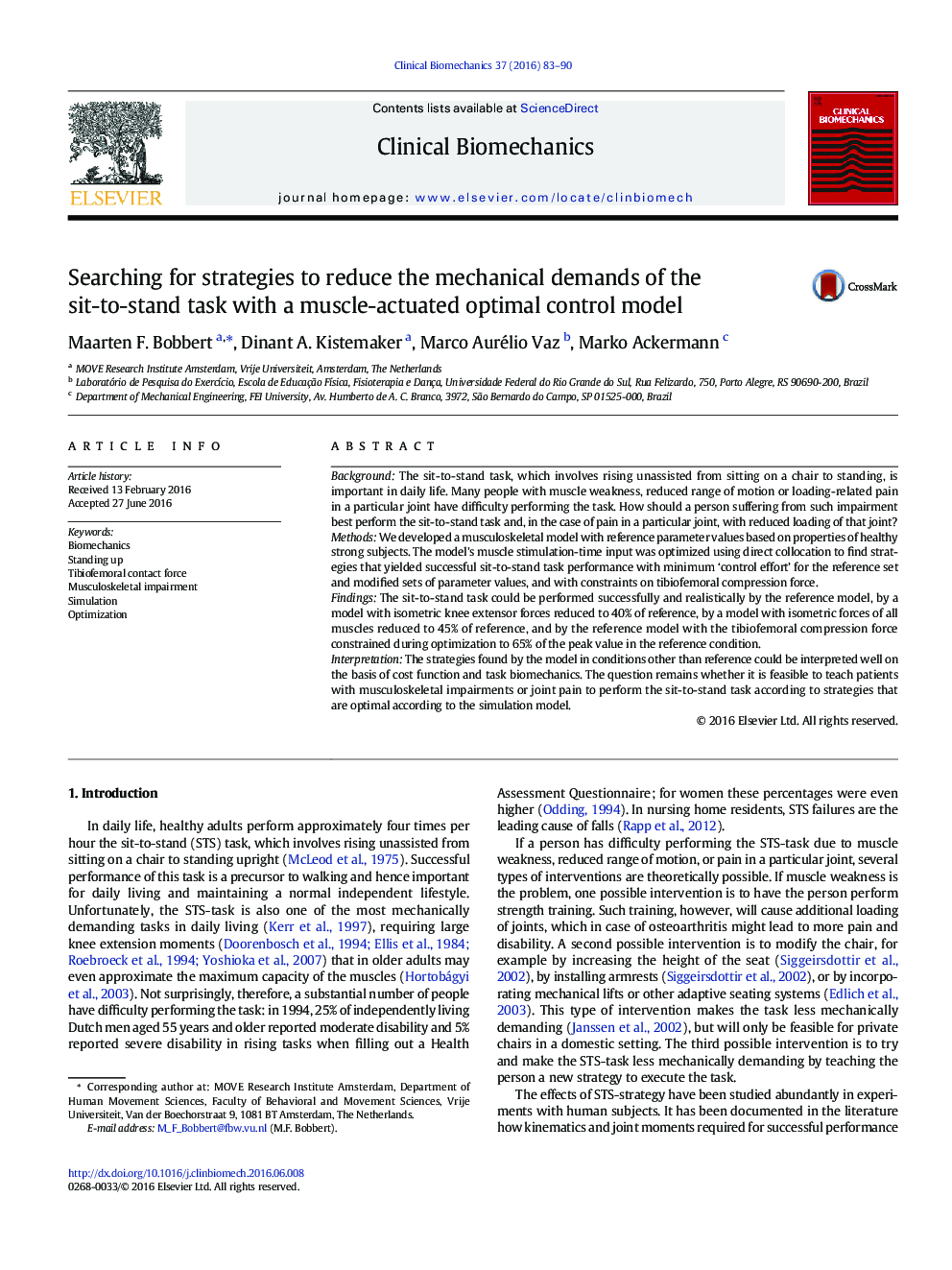| Article ID | Journal | Published Year | Pages | File Type |
|---|---|---|---|---|
| 4050021 | Clinical Biomechanics | 2016 | 8 Pages |
•A musculoskeletal model for study of the sit-to-stand task is presented.•Muscle stimulation is optimized using direct collocation for minimal control effort.•Optimal solutions are reported for task performance in the presence of impairments.
BackgroundThe sit-to-stand task, which involves rising unassisted from sitting on a chair to standing, is important in daily life. Many people with muscle weakness, reduced range of motion or loading-related pain in a particular joint have difficulty performing the task. How should a person suffering from such impairment best perform the sit-to-stand task and, in the case of pain in a particular joint, with reduced loading of that joint?MethodsWe developed a musculoskeletal model with reference parameter values based on properties of healthy strong subjects. The model's muscle stimulation-time input was optimized using direct collocation to find strategies that yielded successful sit-to-stand task performance with minimum ‘control effort’ for the reference set and modified sets of parameter values, and with constraints on tibiofemoral compression force.FindingsThe sit-to-stand task could be performed successfully and realistically by the reference model, by a model with isometric knee extensor forces reduced to 40% of reference, by a model with isometric forces of all muscles reduced to 45% of reference, and by the reference model with the tibiofemoral compression force constrained during optimization to 65% of the peak value in the reference condition.InterpretationThe strategies found by the model in conditions other than reference could be interpreted well on the basis of cost function and task biomechanics. The question remains whether it is feasible to teach patients with musculoskeletal impairments or joint pain to perform the sit-to-stand task according to strategies that are optimal according to the simulation model.
